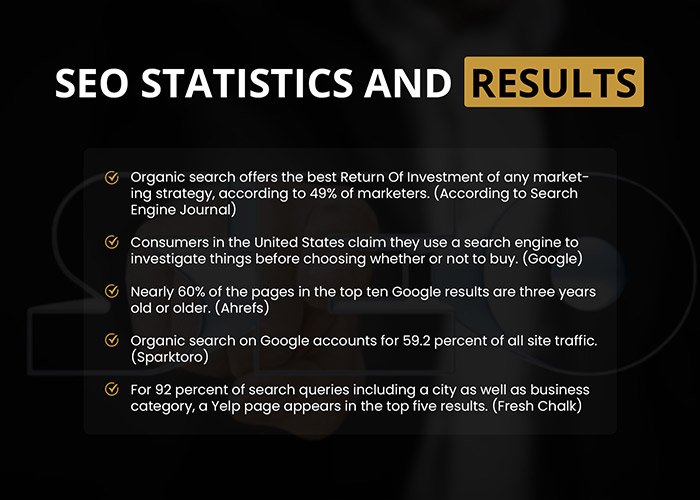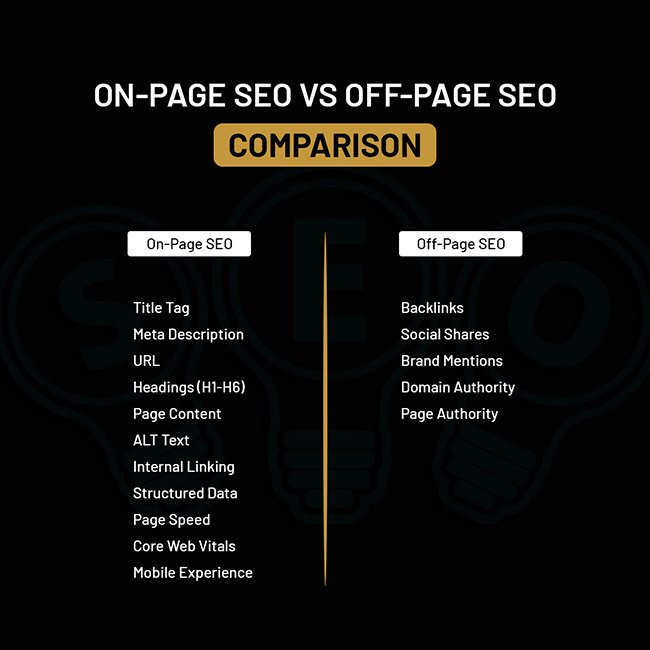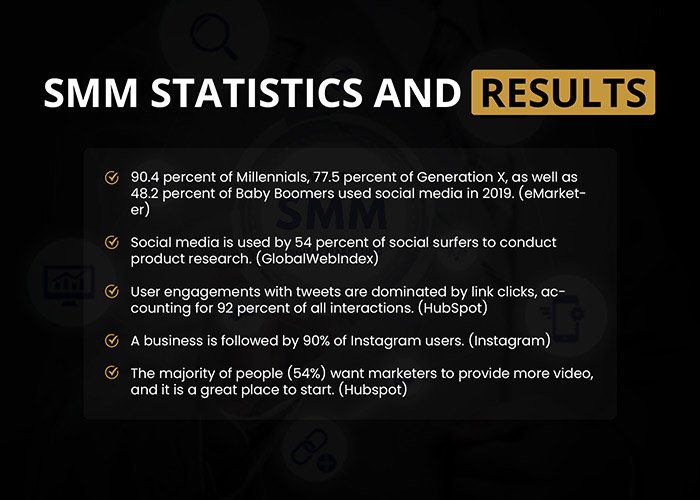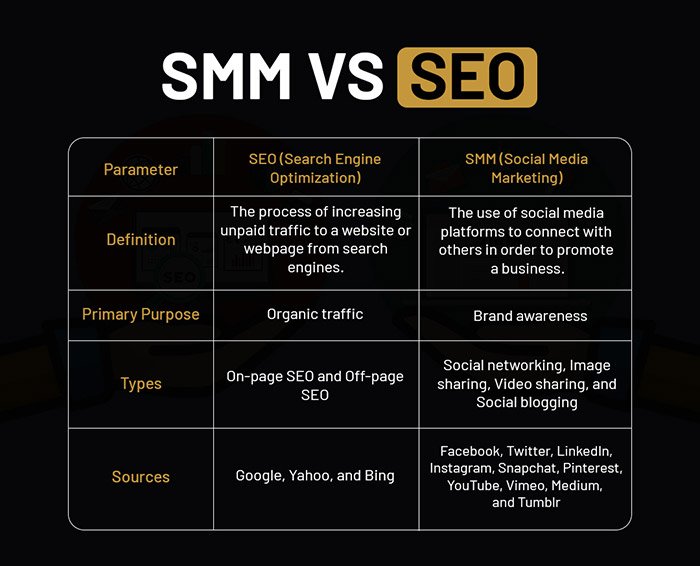
SEO vs. SMM: What’s the Difference?
In the world of digital marketing, SEO and social media marketing are popular subjects.
But what are the differences between SEO and social media marketing? And how can you put every one of these marketing tactics to work for your company?
We’ll look at the differences between SEO and SMM in this piece so you can have a better understanding of how both marketing strategies function.
By the end, you’ll know which method to use to achieve your objectives: SEO or SMM.
What are the Differences Between SEO & Social Media Marketing?
The distinction between SEO and SMM is that SEO refers to search engine optimization, while SMM refers to social media marketing. SEO improves a website’s visibility in search engines, attracting more visitors. To raise brand recognition, SMM takes advantage of social media networks.
That is the fundamental difference between SEO and social media marketing. However, the whole comparison is far more in-depth.
We’ll now take a closer look at each of these marketing techniques, examining the numerous sorts that each uses to achieve success. We’ll also look at some significant data demonstrating the value of SEO and social media marketing in digital marketing.
SEO Stands For “Search Engine Optimization.”
The technique of boosting the number and quality of visitors to your website in the search results is known as SEO. Good SEO aims to have your website at the top of search engines such as Google, Bing, as well as Yahoo for a specified set of keywords.
The term “traditional SEO” refers to the process of getting a website to appear in organic search results. If you’re unfamiliar with the notion, check out my explanation of organic SEO services.
Also, before we go into the different sorts of SEO below, I’d like to note that I have a comprehensive guide just on top Google rank secret if you want to read it once you’re done here. Many of the suggestions on that page are applicable to what you’ll learn next.
Search Engine Optimization
On-Page SEO is one of the most common types of SEO.
On-page Aspect to all the tactics that may be used on a website to help it rank higher in search results. This method focuses on correctly incorporating target keywords into web pages, so the content is deemed the most relevant results for a search query.

The following are examples of On-Page SEO elements:
Meta Title: The meta title serves as the webpage’s name tag. Search engine robots scan meta titles, and visitors surfing the web perceive them as clickable links inside the search engine results. Including a search engine optimization keyword here can assist a website’s ranking.
Meta Description: For the convenience of search engines and users, the meta description explains the contents of a webpage. Just on search engine results, meta descriptions appear beneath the Meta Title. This is a fantastic spot to insert keywords that you want to target.
URL Structure: The protocol that specifies how a browser can retrieve information about just a resource is known as URL Structure. A route that contains the specific subdirectory structure in which a page is placed is included in URL structures. Including SEO keywords inside the URL can help you rank higher.
Headings: All H1 – H6 tags on the page are called headings. The content is organized using headings. Because search engines give these tags more weight, they’re a fantastic spot to insert keywords.
Alt-Text: This is the alternate text that will be displayed if the component with which it is assigned is not visible. ALT text is most commonly used to describe photos in a textual form. If the picture cannot be loaded, the ALT text is shown instead. Another ideal spot to insert SEO keywords is here.
Internal Linking: Internal linking refers to one website’s web page referring to another website’s webpage. Internal linking can assist search engines in tying together disparate pieces of content on a website. This is a place where you may strategically use keywords for on-page optimization by including them in the anchor text of internal links.
All measures conducted outside of a webpage to influence the ranks within search results are referred to as off-page SEO. This method might be compared to getting “votes” for your material. Improving the impression of a website’s fame, relevance, trust, and authority on a specific issue is part of optimizing for off-site ranking criteria.
The following are examples of Off-Page SEO elements:
Backlinks: External links leading to your website are referred to as backlinks. A backlink is created whenever another webpage links to your website. Backlinks’ volume, quality, and topical relevance are all factors in the score used by search engines such As Google, Yahoo, and Bing to rank a webpage for a set of keywords.
Social Media Posts: When your information is shared via social media platforms, this is referred to as “social media posts.” As the material is shared more widely on social media, it can help to boost the number of references to a webpage.
Social Bookmarking: Adding connections to your web pages that allow online bookmarking sites such Reddit, Scoop. StumbleUpon, Digg, and Wonderful to generate more visibility for your material is known as social bookmarking. In addition to acquiring additional links, social bookmarking sites can assist you in growing your business’s audience.
Review Websites: Websites that allow people to evaluate and review businesses, such as Google My Business, Yelp, Bing Places, and Foursquare. For firms that serve local customers, having a presence on a web page is a solid strategy. When determining your search position, search engines will consider your review profile (both amount and quality).

SMM stands for Social Media Marketing
Using social media sites to market a business is known as SMM or Social Media Marketing. SMM’s objectives are to raise brand awareness, market goods & services, and increase website traffic.
SMM Types
Social networking refers to the various social media platforms where people can communicate with one another online. You can upload, share, and comment on each other’s content on social networking sites. These sites are an excellent platform to post connections to your articles to increase their visibility. You can also pay to promote your content to expand its reach. LinkedIn, Twitter, and Facebook are all popular social media platforms.
Image Sharing: This is a term used to describe social media networks that allow you to exchange photos. Image sharing services are a great way to promote user-generated material while showcasing your items. Some people even utilize image-sharing platforms to promote their brands by holding freebies and contests. Instagram, Snapchat, as well as Pinterest are all popular image-sharing platforms.
Video-Sharing: It refers to the social media platforms that allow you to upload and share videos with the rest of the world. By educating your audience on critical issues, making how-to films, and responding to questions in face-to-face interaction. Vimeo, YouTube, and Dailymotion are all popular video-sharing platforms.
Social Blogging: This is a term that refers to social media sites that are designed to be used as publishing platforms. Social blogging sites may help you increase your brand’s authority and achieve new readers who aren’t actively searching for you on various social media platforms. This channel is an excellent area to repurpose parts of your existing blog content to attract visitors back to the main website. Medium and Tumblr are two popular social blogging platforms.

SMM vs. SEO
This easy-to-read comparison table demonstrates the differences between SEO and SMM. It goes over the majority of what you’ve studied about SEO services as well as social media marketing so far.

I hope you are enjoying this SEO versus SMM comparison.
The critical distinction between SEO and SMM, as you’ve learned, is that SEO focuses on increasing website traffic, while social media is utilized to increase brand awareness. When utilized simultaneously, though, both marketing techniques can indeed be helpful.
If you’re attempting to decide whether to employ SEO or SMM right now, it’s best to figure out just what your company’s present goals are. Choose SEO if higher keyword ranks and website traffic are much more essential to you. If getting the message out about your business is more important, though, SMM is the way to go.


